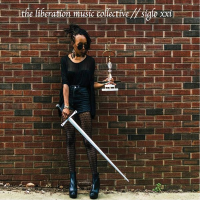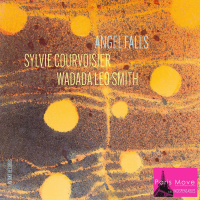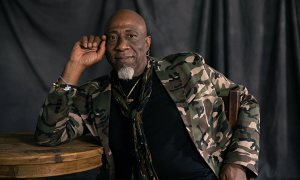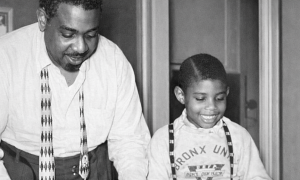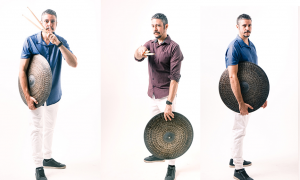Home » Jazz Articles » Interview » Gary Burton: On ECM & Playing With Pat Metheny
Gary Burton: On ECM & Playing With Pat Metheny

They gave more care to the production side than most companies ever thought of doing for jazz.
—Gary Burton
Gary Burton: I remember doing it [the ECM Showcase tour]. Eberhard was there for it—you know it was quite an undertaking for ECM at that time. Pretty small label, and this was like a big jump to try to get visibility in the U.S. In the beginning they didn't even have U.S. distribution.
All About Jazz: I remember buying import LPs: those pressings were great.
GB: My first records that came out on the label—the only way people could get them was to order them. Only a few places did stock them, so I was almost surprised when the label actually kept on growing anyway.
They gave more care to the production side than most companies ever thought of doing for jazz. The typical jazz thing was throw the musicians in the studio for a day, two at the most, record as fast as you can, put it out. And Manfred [Eicher, founder of ECM] hired the best studios, the best engineers, took his time with everything, and so the quality was immediately just a notch above whatever was normal at the time. It was a pleasure being on that label. I was there sixteen/seventeen years.
AAJ: And now you're back.
GB: Well, I am. For Pat and I both this was a nice pleasant surprise. Manfred came to the concert in Stuttgart. We hadn't planned to make a CD of it. We recorded it for the radio, for Stuttgart Radio, and he came to the concert out of friendship with Eberhard and so on, and seemed to really enjoy it. It was nice to see him again. I hadn't seen him in three or four years probably. And then out of the blue he got in touch with Pat and said he'd like to put it out—in fact wanted to rush it out in time for the Grammy nominations for this year, and in time for this festival, where it would be performed again.
Besides the big piece with Pat, Jan Garbarek did a very nice thing playing along with Eberhard tracks. We did it twice, two nights in a row, in Stuttgart, and it was one of the most emotional things with Eberhard sitting there in the front row watching it all and we're all playing all these arrangements of his songs and paying tribute to him. It was a great experience.
AAJ: I'm very surprised that it wasn't intended for ECM release to start with. It seems like a perfect match.
GB: Well you see why... we didn't think of it as a record. It's this multimedia and the video, so what you hear on the record is the music, but it was really as you'll see on this giant screen as Eberhard is playing with us throughout the piece.
Pat did this really amazing thing. He edited all these video clips together—30 minutes' worth—and then wrote music that went with what Eberhard is playing on the screen, and turned it into sections, different changes of pace, color, everything. It's a really masterful accomplishment and he did it in a few weeks, 3-4 weeks from start to finish. I would think the editing of the stuff alone would have taken more than that, but he got this idea and asked to get some video clips of Eberhard which they provided for him and that's what he started out with. So we didn't think of it being anything but this live concert. We even said it's a shame we'll never get to play this again. And here we are playing it again and it's out on a record, and he's going to do it again in Japan.
He's going for a residency somewhere and they're really keen to do it so Scott's going to go over. The bass part's incredibly hard and Scott Colley just makes it seem like nothing. I can't think of more than two or three jazz bass players who could play this, so he's kind of indispensable to it. So he's going to fly over to do the Japanese performance, but that will probably be the last, because it's such a bear to set it all up.
AAJ: The other thing I thought would be interesting is to talk about the long relationship you've had with Pat, since it comes up a couple times at this festival.
GB: Yeah, 40-some years now. Let's see, 42 years that we've known each other and played off and on... It's interesting that I have the same timeline with Chick Corea.
With Chick, we've played from 1972 on, we've played every year till this year. This is the first year we're not actually going to have some little tour during the year. He's touring the whole year with Herbie Hancock. Anyway, I met Pat at the same time, met him in Wichita at a college jazz festival. He was a student at the time at the University of Miami, but he's from Kansas City, so he was friendly with the people in Wichita. And they invited him to come up if he wanted to be on the festival. So he took the bus all the way from Miami to Wichita to be there and he said it was because he was a big fan of my music, my band, and thought this would be a chance to meet me and maybe even get to sit in with me or something, which is exactly what happened. Normally I don't have people sit in or anything, but he came up and said, "Can I play a tune with you?" And I started to say, "Well I'm here with the college band..." But he said, "I know all of your songs." "Really, that's interesting." So we finally ended up doing a tune together and I heard him play with his student group, and even then—he was 17 or 18 at that point—very impressive as a young talent. I could easily see this guy was going to go somewhere.
AAJ: But you get the credit.
GB: A year later he moved to Boston at my suggestion. He said what should I do and I said you need to go to where there's a jazz scene going on and at that point in time it was pretty much either New York or Boston (because of Berklee). So he came up and within six months to a year, I invited him to join my band. Probably would have been sooner except I already had a guitarist.
AAJ: Mick Goodrick.
GB: And he was a wonderful player and much more established and touring as a player than Pat, who was still getting that together. So we were kind of waiting for some opportunity to come along and then one day he showed up at my house with this new guitar he had found in a music store, a 12-string electric. Unusual. Usually they're acoustic instruments. But the 12-string electric sounded really cool! And different from the sound of Mick's guitars so suddenly I could see two guitars in the band instead of one. So that allowed us to bring Pat into the band. For the first half of his time with me, we were a quintet, and then Mick decided to stop traveling and go back to teaching; that left Pat as the only guitar, which was perfect timing for him. He was getting kind of restless as the second guy and this was a chance to really have an open opportunity to take the reins, and within another year and a half or so, he was ready to be the star of his own band. He'd already met Manfred who was ready to record him. My manager started booking him and managing him, still to this day, so it was a great beginning.
That was when he was developing his sound and his style and his composing started at that time; everything about him was coming together. The next question that always happens when you play with somebody and they move on is: do you stay connected or not? And in the case of Pat, we've stayed musically connected as well as friends. Every so many years we do another tour or another record or some kind of project that's different and fresh for us, and we also consult each other regularly about projects we're working on. You know, he's great at record production; probably the best jazz musician I know on how to make records, how to use the technology most effectively and so on. So when I'm working on something new, I often will email him and describe what I'm doing and here's a couple of questions and what do you think about that. And then he does that to me sometimes. You know the Orchestrion Project—I went up to New York several times to consult, as it were, because he was including vibraphones and marimbas and percussion stuff, and we were trying to work out what mallets to use and how high to program for hitting the bars and all this sort of thing. So it works both ways. It's been a nice relationship over the years.
I only got to hear it [the Orchestrion] once. He did this huge tour and when he came through Florida—you know I've lived in Fort Lauderdale these past 12 years—I was out of town touring somewhere. So we had to fly to Washington at some point when I had a free weekend and he was going to be playing there so Jonathan and I flew out to finally see the real thing in concert. I'd heard the record. But again the visual was very much a part of it.
The record in a way ironically sounded like it could have been his band. It sounded like a Pat Metheny Group record and it didn't strike me as radically different sounds. But in seeing it, just him and this wall of instruments... another thing we talked about at great length was how do you put this on a stage. If the instruments are all just in the background and all they see is you playing guitar, you may as well play with a tape. The idea is they paid to see this thing really functioning as an orchestra. So he carefully laid out the instruments on different levels and there's this wall of things behind him on the stage that are all the different instruments and you could see them being played. As with all things that he does, he makes them work and makes it looks easy. Even this thing, I was skeptical of it a little bit when he described it. In a few weeks we're going to do it; I'm working on it now. Wow. Sounds like it's this huge undertaking and it all worked out. All the technology worked out. We even have lights secreted around the stage that flash that we have to stay with the video, so this prepared track that three or four people are hearing—the conductor and the bass and drums and everyone else sees these lights that are flashing blue except for red on the downbeats.
AAJ: So it's like a visual click track.
GB: Exactly. And of course there are changes—tempo changes and everything, but it's all programmed to flash the right information. So if you get lost and not sure where you are, you look at the lights and you get back on it. Smart stuff.
He is everybody's guitar hero. He's a masterful player and he came up and he invented his own sound and his own recognizable style. That's one of the hardest things to do. And you can't just set your mind to "I'm going to be different from other people." It either is something you hear and can make work or not, and the majority of players, even if they're quite good, sound more or less in the middle traditional zone of whatever the instrument is, whether it's saxophone or guitar or whatever. But if you can come up with a truly identifiable original sound, it will set you apart from the crowd. Pat came up with that after the first couple of years of his career getting underway.
AAJ: That's what was so scary about him.
GB: Well he is scary. I think of all the successful musicians I've known in jazz, which were a lot of them—he's among the most deserving. He works hard at it and is a real perfectionist. He's always thinking ahead, trying more and more unusual creative, inventive things. My admiration for him has just continued to grow over the years. I feel the same way about Chick, too.
AAJ: I think it's apparent when you're both on stage together.
GB: Yeah, for us it's like jumping in with your friend to the same old swimming hole. It's such a natural thing, and we both played with Antonio Sanchez and Scott a lot. They've been my rhythm section for the last three or four years now, and of course Antonio's been with Pat for about 10 or 12 years. So we're all really comfortable playing together. And that was just so much fun.
Tags
Gary Burton
Interview
Mark Sullivan
DL Media
United States
Michigan
Detroit
detroit jazz festival
pat metheny
Eberhard Weber
Jan Garbarek
Scott Colley
Chick Corea
Herbie Hancock
Kansas City
Boston
Mick Goodrick
Fort Lauderdale
Antonio Sanchez
PREVIOUS / NEXT
Support All About Jazz
 All About Jazz has been a pillar of jazz since 1995, championing it as an art form and, more importantly, supporting the musicians who make it. Our enduring commitment has made "AAJ" one of the most culturally important websites of its kind, read by hundreds of thousands of fans, musicians and industry figures every month.
All About Jazz has been a pillar of jazz since 1995, championing it as an art form and, more importantly, supporting the musicians who make it. Our enduring commitment has made "AAJ" one of the most culturally important websites of its kind, read by hundreds of thousands of fans, musicians and industry figures every month.




